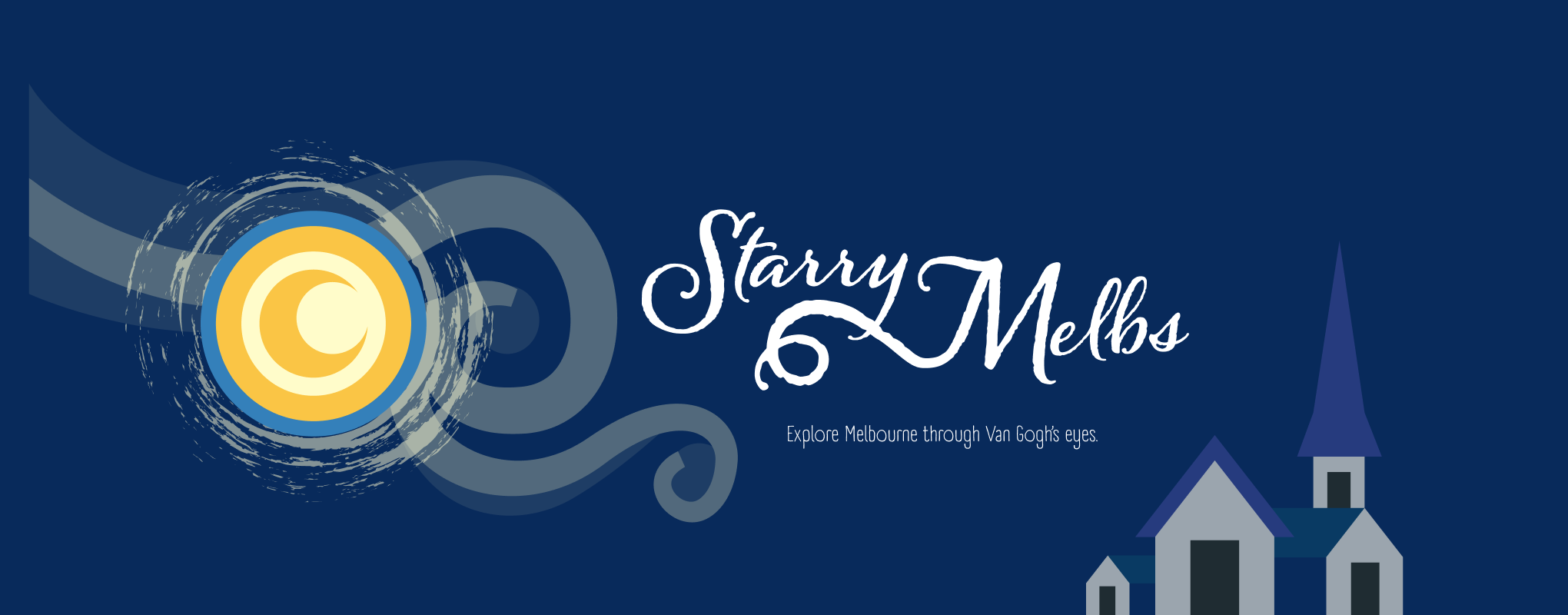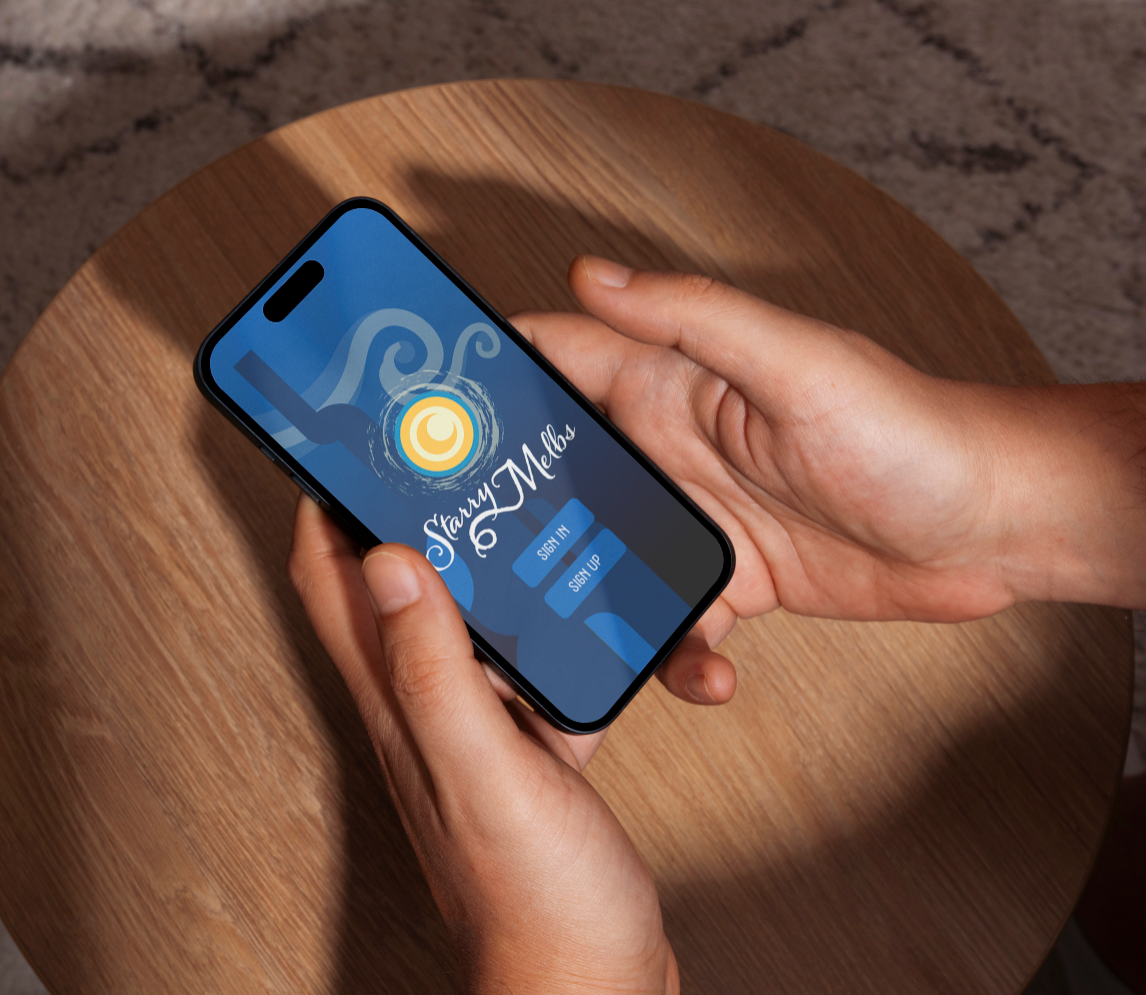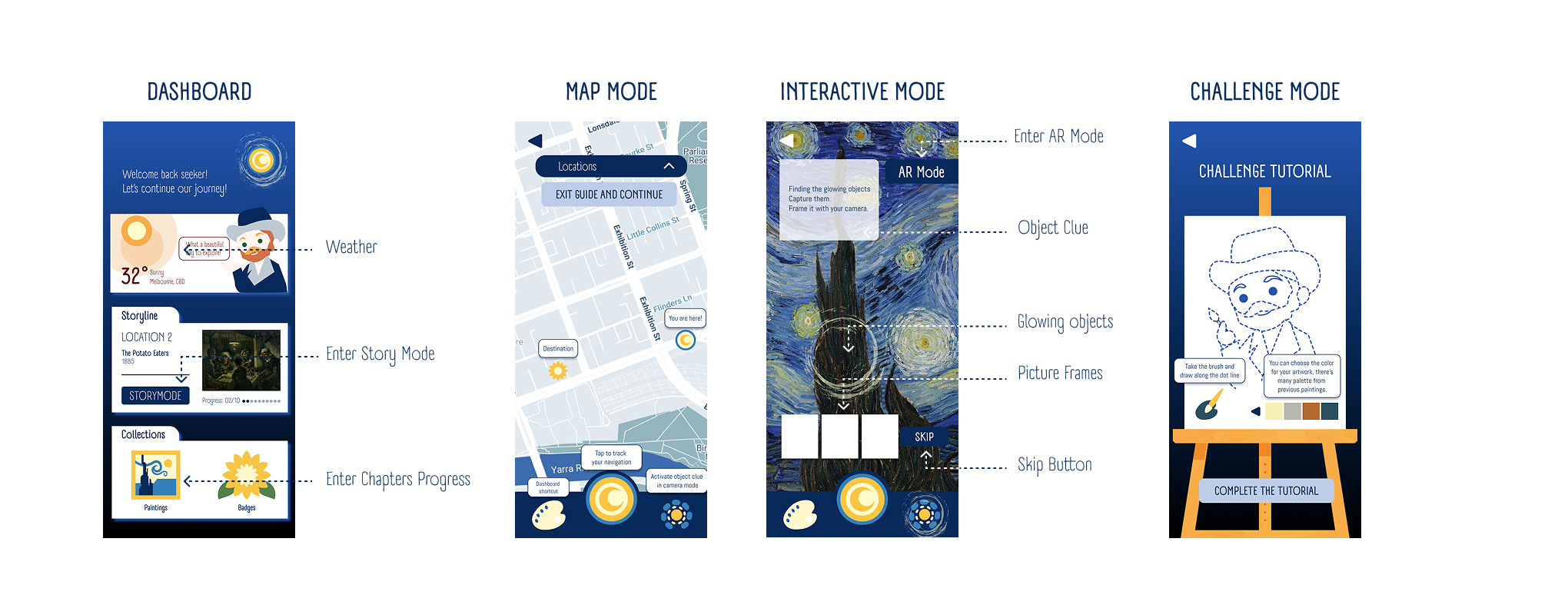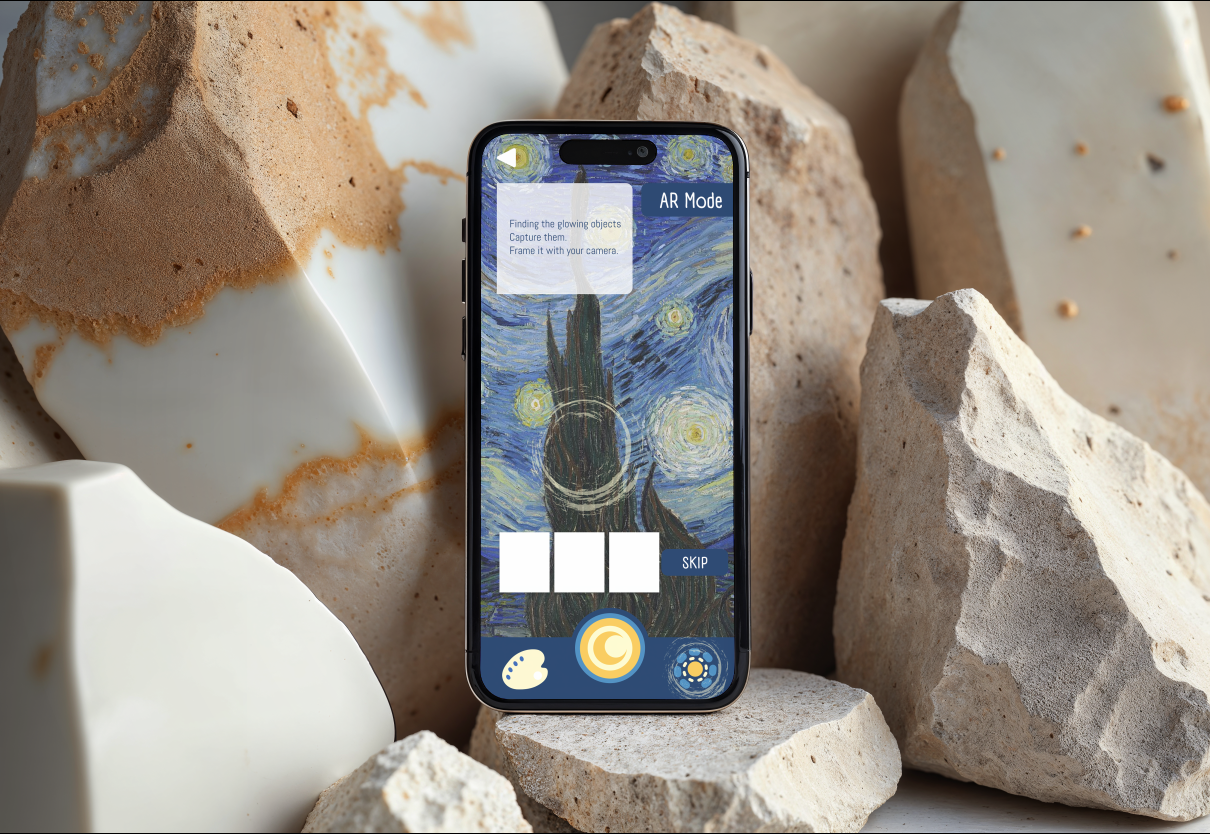
Figma - Illustrator - 2024
Project Overview:
Scope
Starry Melbs is a mobile storytelling application that guides users through a geolocated journey across Melbourne, inspired by the life and works of Vincent van Gogh. Players follow narrative clues and metaphorical prompts, presented as letters from Van Gogh, to discover real-world objects and locations that echo elements from his paintings. By photographing these objects, users gradually unlock full artworks and uncover chapters of Van Gogh’s life, culminating in the mystery surrounding his death.
Brainstorming Possible Ideas:
Process
Primary Research: Explored and observed Melbourne’s public spaces to identify 10 locations that resonate with Van Gogh’s themes and visual motifs.
Secondary Research: Studied Van Gogh’s biography and cinematic portrayals to shape the narrative arc and emotional tone.
Literature Review: Investigated theories on public space, location-based gaming, and digital storytelling to inform interaction design.
Concept Development: Brainstormed three initial concepts, evaluated their strengths and limitations, and synthesized insights into the final Van Gogh-inspired direction.
Focus Group & Persona Creation: Conducted a focus group with four participants to explore geolocation gameplay, emotional engagement, and accessibility. Analyzed feedback to develop two user personas.
Narrative & Interaction Design: Crafted two scenarios, a storyboard, a user journey, an app flowchart, and a brand identity, including logo and UI, visual elements.
Prototyping & Testing:
Built high-fidelity prototypes in Figma for mobile interaction
Conducted field testing with four participants using pre- and post-test surveys
Performed heuristic evaluations to identify usability issues
Refined the design based on synthesis and feedback
Ran a final focus group to validate improvements and finalize the prototype
Concepts
CRIME – Treasure Hunt concept
Solve a major case by locating real-world crime scene lookalikes, linking evidence through minigames, and unlocking survival tips and awareness rewards.
FOOD – Collecting Butterflies concept
Explore trending Melbourne eateries by photographing shop logos, solving food-themed puzzles, and earning recipes or discount vouchers as rewards.
ART – Treasure Hunt concept
Uncover an artist’s life by identifying metaphorical objects from paintings, solving creative riddles, and collecting digital stickers, culminating in exhibition access.
Pain Points
Narrative immersion vs. physical movement: Users can lose emotional engagement if the story doesn’t align with their surroundings or feels disconnected from the locations.
Art interpretation in urban context: Translating Van Gogh’s metaphorical imagery into Melbourne’s landscape requires thoughtful visual and thematic mapping.
Balancing mystery with clarity: Puzzles and clues must be challenging yet solvable, guiding users without overwhelming them.
Defining Design Goals:
What should I focus on to design a good location-based mobile game with an art concept for my target users?
Goals
Narrative Immersion Through Geolocation: Craft a compelling, location-based story that emotionally connects users to Van Gogh’s life and art through Melbourne’s urban landscape.
Intuitive Mobile Interaction: Design seamless camera, GPS, AR mode, and sensor-based interactions that guide users clearly without disrupting the flow of exploration.
Inclusive and Accessible Experience: Ensure the app accommodates diverse user needs with clear UI elements, readable text, and flexible navigation.
Puzzle-Driven Engagement with Optional Interactivity: Offer interactive challenges for users who enjoy them, while allowing others to skip directly to narrative content, respecting different play styles and attention spans.
Iterative, User-Informed Refinement: Continuously improve the prototype through field testing, heuristic evaluation, and focus group feedback to ensure clarity, usability, and emotional resonance.
I created 3 concepts and then analyzed the pros and cons, and my preference to choose the final one.
Understanding the Issue:
How do users engage with location-based storytelling on mobile devices?
Designing a geolocated narrative experience presents unique challenges in balancing emotional storytelling with real-world mobility. Users must navigate physical spaces while staying immersed in a digital narrative, requiring intuitive interaction, clear guidance, and meaningful rewards.
Using insights from the interviews, I established design goals tailored to the target audience's needs and preferences.
Style Guide:
Screen Design:
Field Testing - Focus Group - Mobile Design











